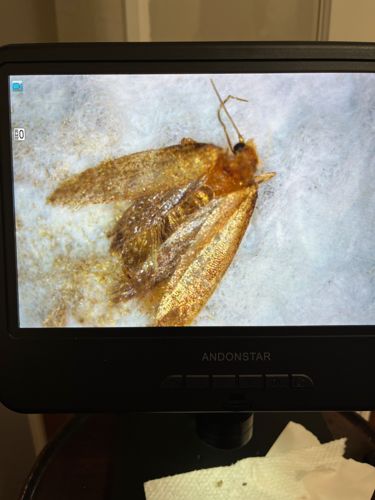Clothing Moth
Scientific Name: Tineola bisselliella
Order & Family: Lepidoptera, Tineidae
Size: 5-8 mm (approx. 1/4 to 1/3 inch) wingspan

Natural Habitat
Indoors, specifically in dark, undisturbed areas where natural fibers are stored, such as closets, attics, and storage chests. They prefer natural fibers like wool, silk, fur, feathers, and sometimes cotton.
Diet & Feeding
Larvae feed on natural fibers, particularly keratin-rich materials like wool, fur, feathers, hair, felt, and silk. Adults do not feed.
Behavior Patterns
Adult moths are weak flyers and tend to avoid light, preferring to crawl or flutter about in dark areas. They are mostly active at night. The damage to fabrics is caused by the larval stage, which spins silk tunnels or patches as it feeds. Females lay eggs directly on food sources.
Risks & Benefits
Risks: Significant economic pest due to damage to clothing, carpets, upholstery, and stored natural fiber items. Can ruin valuable textiles. Benefits: None known for humans; they are generally considered a destructive pest.
Identified on: 9/21/2025